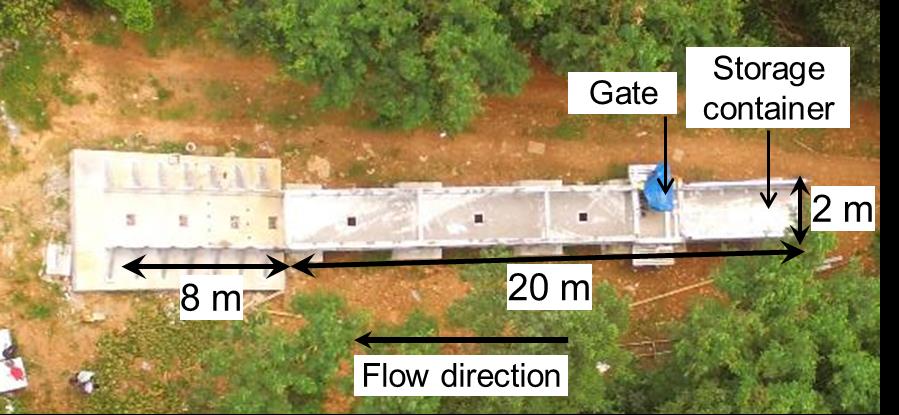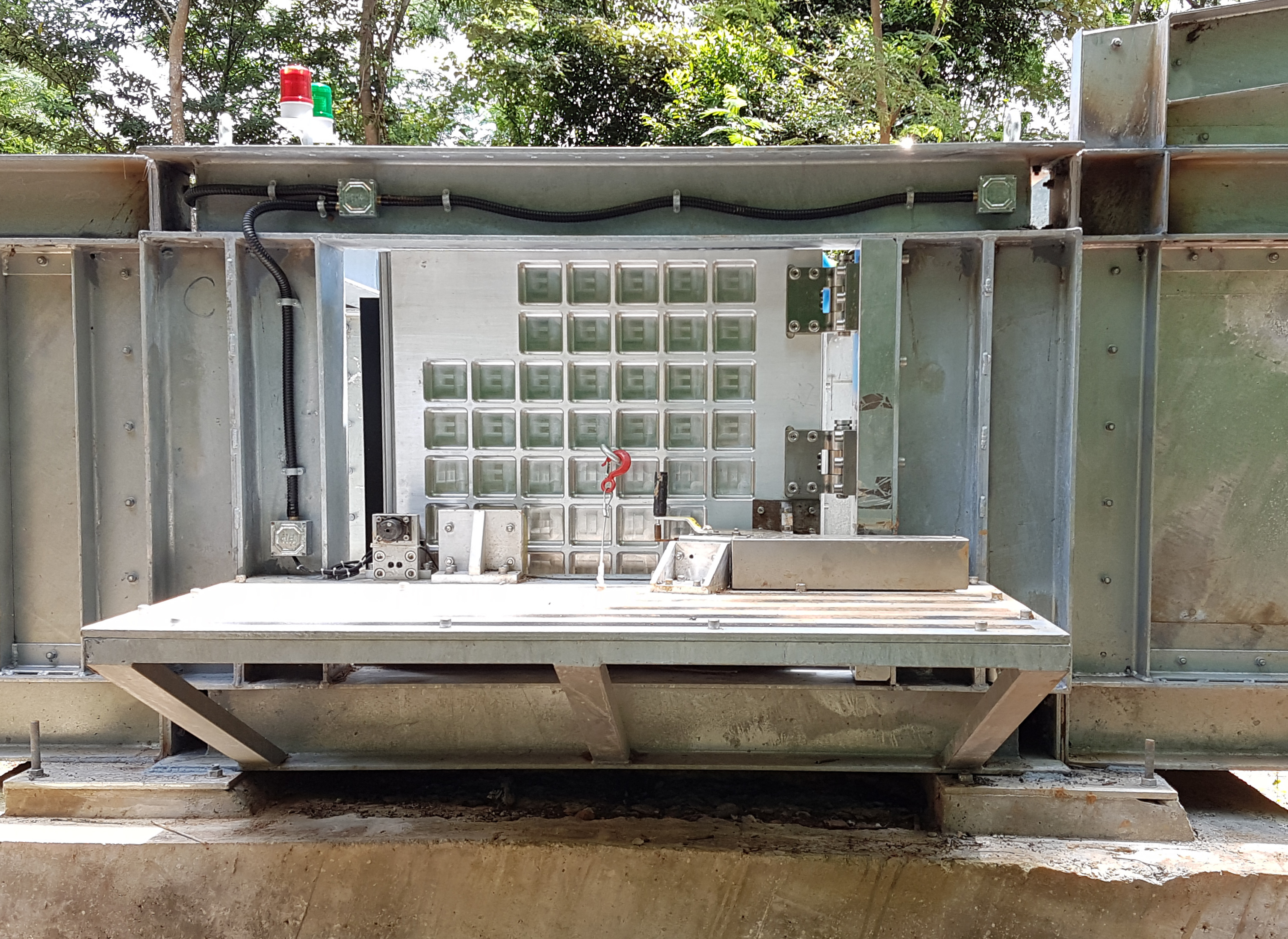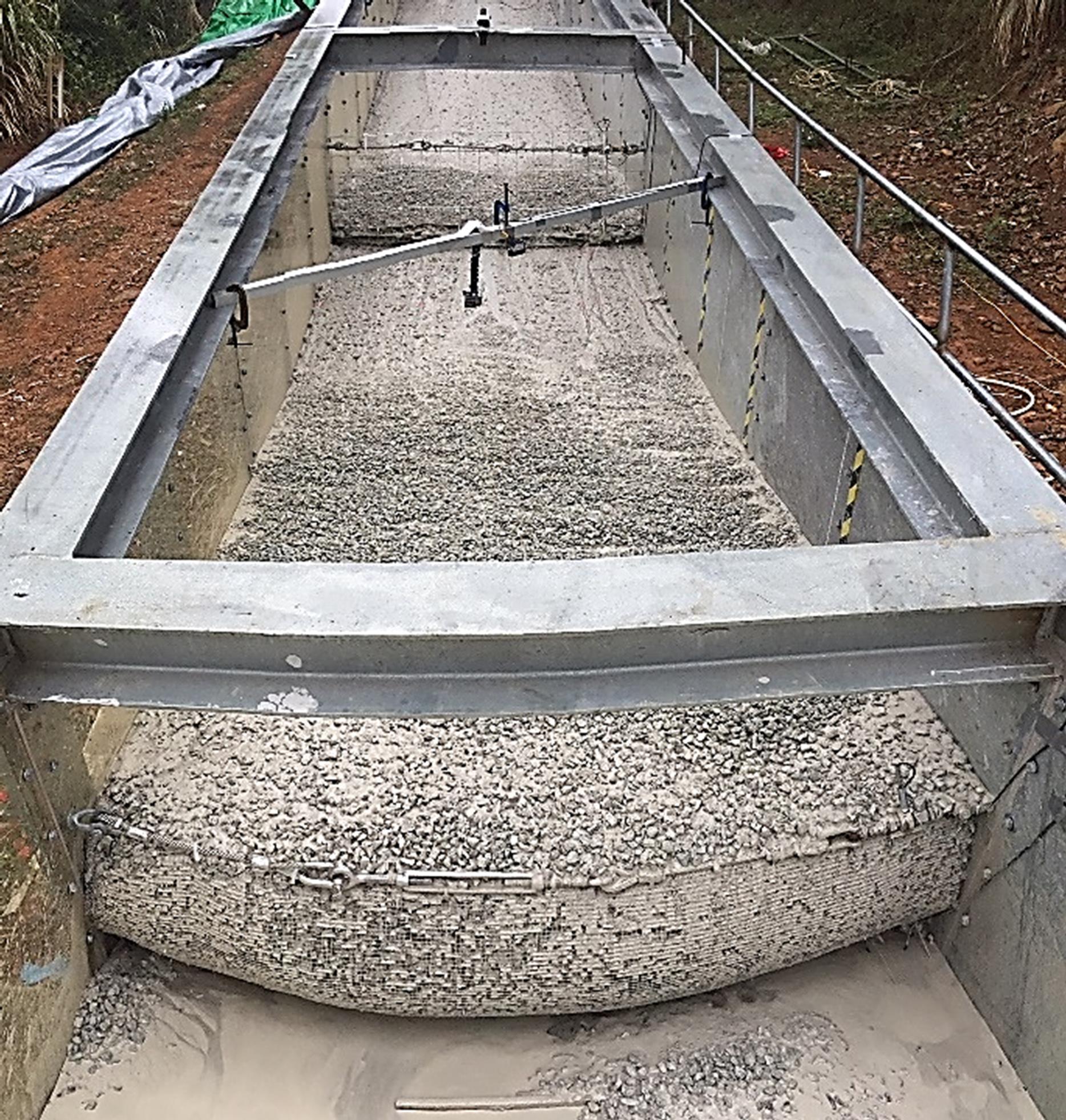News
HKUST Debris Flow Research
Some exciting research is being conducted at the Hong Kong University of Science and Technology in the field of debris flow dynamics. The program is part of a theme-based research scheme project entitled understanding debris flow mechanisms and mitigating risks for a sustainable Hong Kong (T22-603/15N) that is being developed by Professor Charles W.W. Ng of the Department of Civil and Environmental Engineering and funded by the Hong Kong Research Grants Council.
Professor Ng’s group have designed and built a flume that is one of the largest such models for studying debris flow-structure interaction in the world (Figure 1). The channel has a width of 2 m and a total length of 28 m. The storage container can hold up to 10 m3 of debris. A custom built double door system (Figure 2) is used to retain debris material inside the storage container above the 20° inclined channel.
The flume is instrumented using cells developed at HKUST. These cells are installed at regular intervals of 5 m along the channel base. Each cell measures normal and shear stresses and changes in pore water pressure at the same location. Laser sensors are mounted above each cell to measure the flow depth and deduce the bulk density of the flow. In addition, novel instrumentation and imaging techniques using UAV and 3D reconstruction are used during tests.
The flume serves the local and international research community and industry at large. Projects have already been carried out with collaborators from Korea and Italy. Correspondingly, different types of structural countermeasures, such as flexible net barriers (Plate 3), have been installed in the channel to study fundamental impact mechanisms and to enhance existing design guidelines.
For more information, contact Dr. Clarence Choi at ceclarence@ust.hk. Clarence is a Research Assistant Professor at the HKUST and is also the chair of the AGHP’s Debris Flow and Steep Creek Hazards Mitigation Committee.

Figure 1. Bird’s eye view of the flume model

Figure 2. Side view of Custom-designed door to initiate dam-break

Figure 3. Upstream view of flexible net barrier installed in channel
